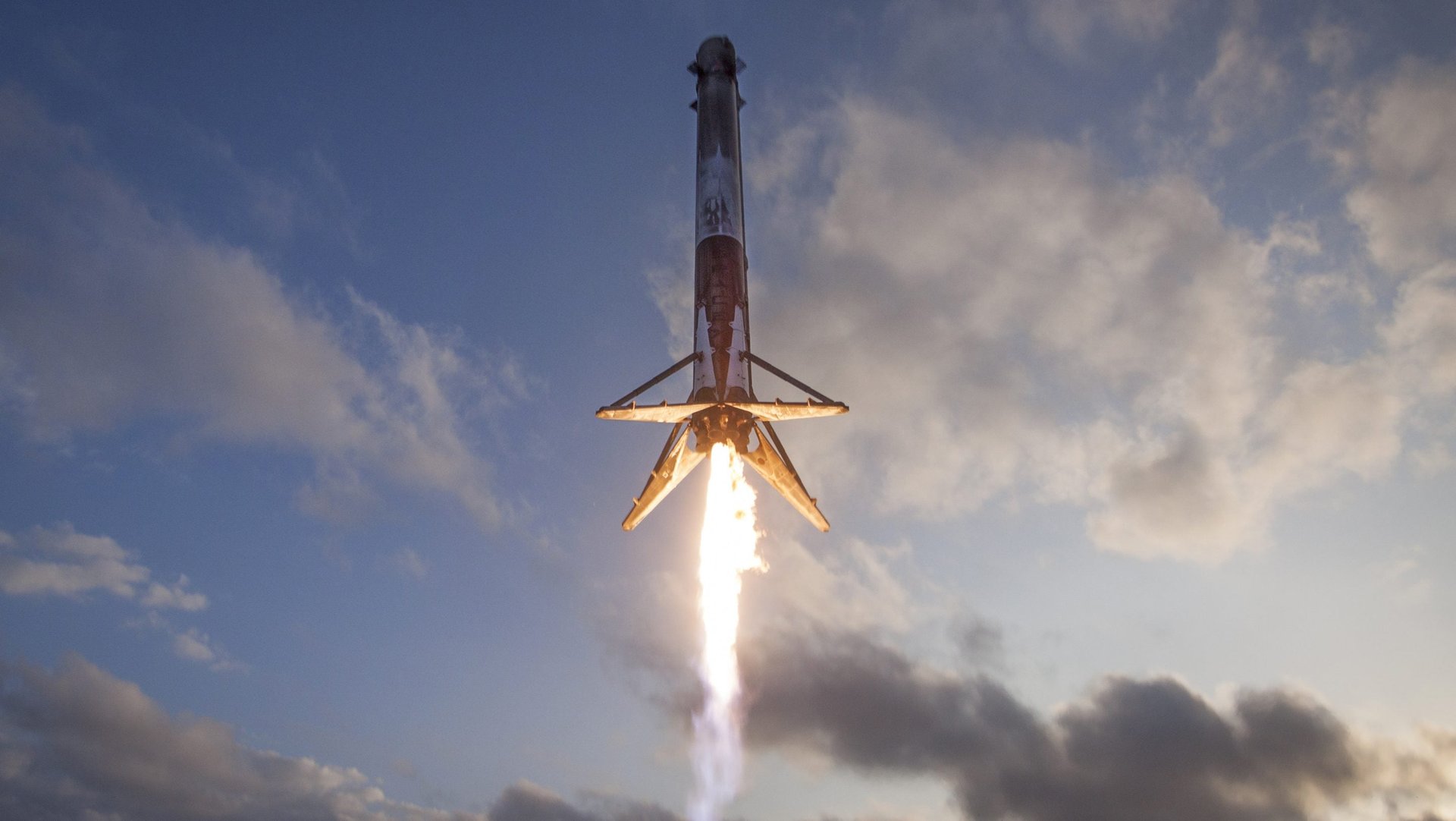SpaceX lost a rocket booster during landing for the first time since 2016
A SpaceX booster stage crashed into the ocean during an attempt to land at Cape Canaveral Wednesday (Dec. 5), after it launched a supply spacecraft to the International Space Station.


A SpaceX booster stage crashed into the ocean during an attempt to land at Cape Canaveral Wednesday (Dec. 5), after it launched a supply spacecraft to the International Space Station.
The brand-new Falcon 9 rocket booster lifted off successfully, but as the first stage—which contains nine Merlin engines and the bulk of the rocket’s structure—returned to land, it lost control and crashed into the Atlantic ocean.

In a tweet, SpaceX founder and CEO Elon Musk attributed the crash to a stalled hydraulic pump (which controls the fins on the rocket). He said the rocket appears to be undamaged and is still transmitting data to the control room.
Musk also said that the pump for the landing-control fins was not designed to have a redundant backup—it’s not critical to the mission of launching spacecraft— but said the company would likely add a backup now.
SpaceX stressed that their primary mission was launching NASA’s supplies into space, and so far that mission is on track, with the Dragon spacecraft scheduled to reach the ISS on Dec. 8. That will mean a new record for the company: its 20th successful launch in 2018.
Wednesday’s landing snafu involved a “block 5” Falcon 9 booster, which is designed to be re-used at least 10 times. On Dec. 3, SpaceX flew a different “block 5” rocket for the third time, landing it successfully for future re-use. As SpaceX rockets are priced starting at $60 million (though previously-flown ones retail more cheaply), the company’s inability to reuse this booster in the future could cost it millions.
The CRS-16 booster began spinning out of control toward the end of its landing pattern, just before it was expected to fire its engines to slow itself ahead of reaching the ground. It’s not known if any changes were made to this rocket compared to other block 5 boosters.
John Insprucker, the SpaceX engineer hosting the company’s live video stream, noted that the company will use the data gathered during the failed landing to iterate and improve on future vehicles.
This is the first failed landing of a Falcon 9 booster since June 2016. Since then, the company has recovered boosters 26 times in landings on autonomous drone ships and landing pads at Cape Canaveral and Vandenberg Air Force Base. While this is hardly the first time a SpaceX booster has crashed during a recovery attempt, more than two years of successful attempts made them seem routine.